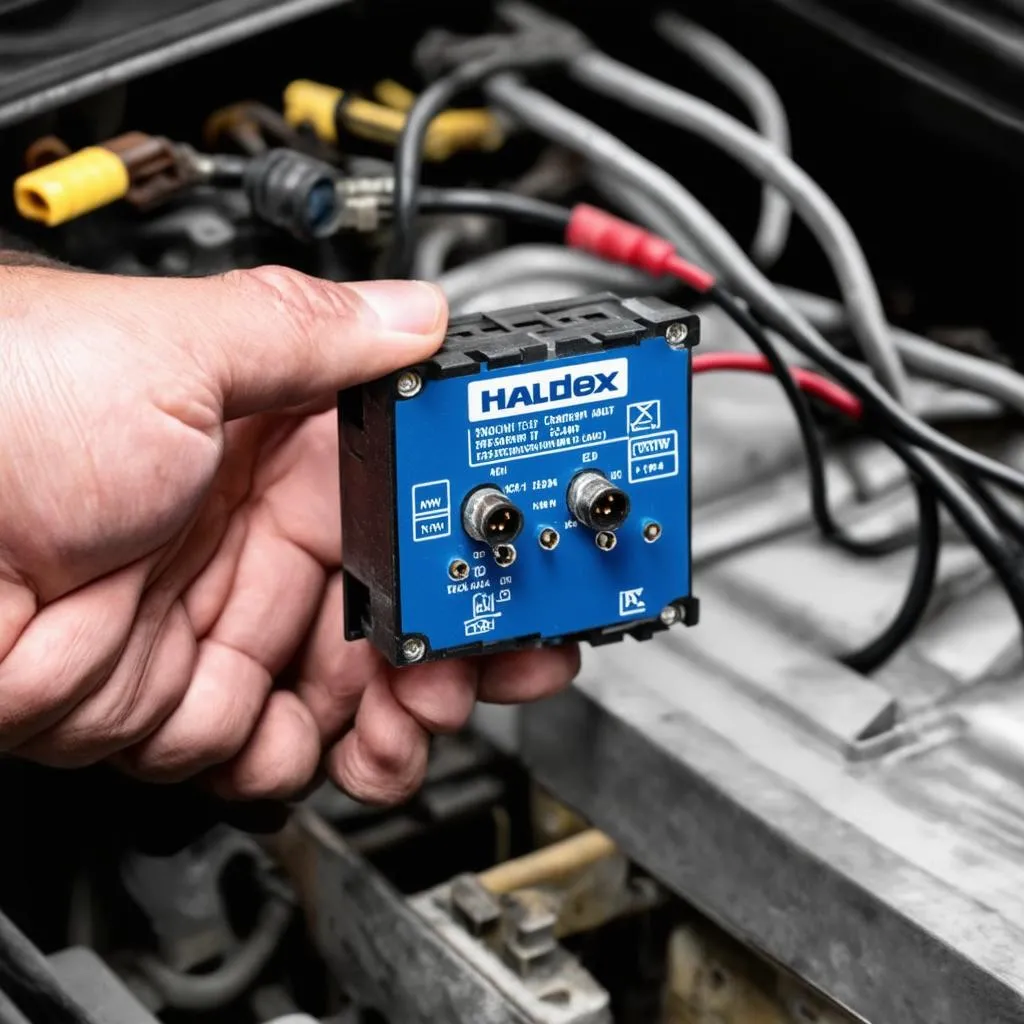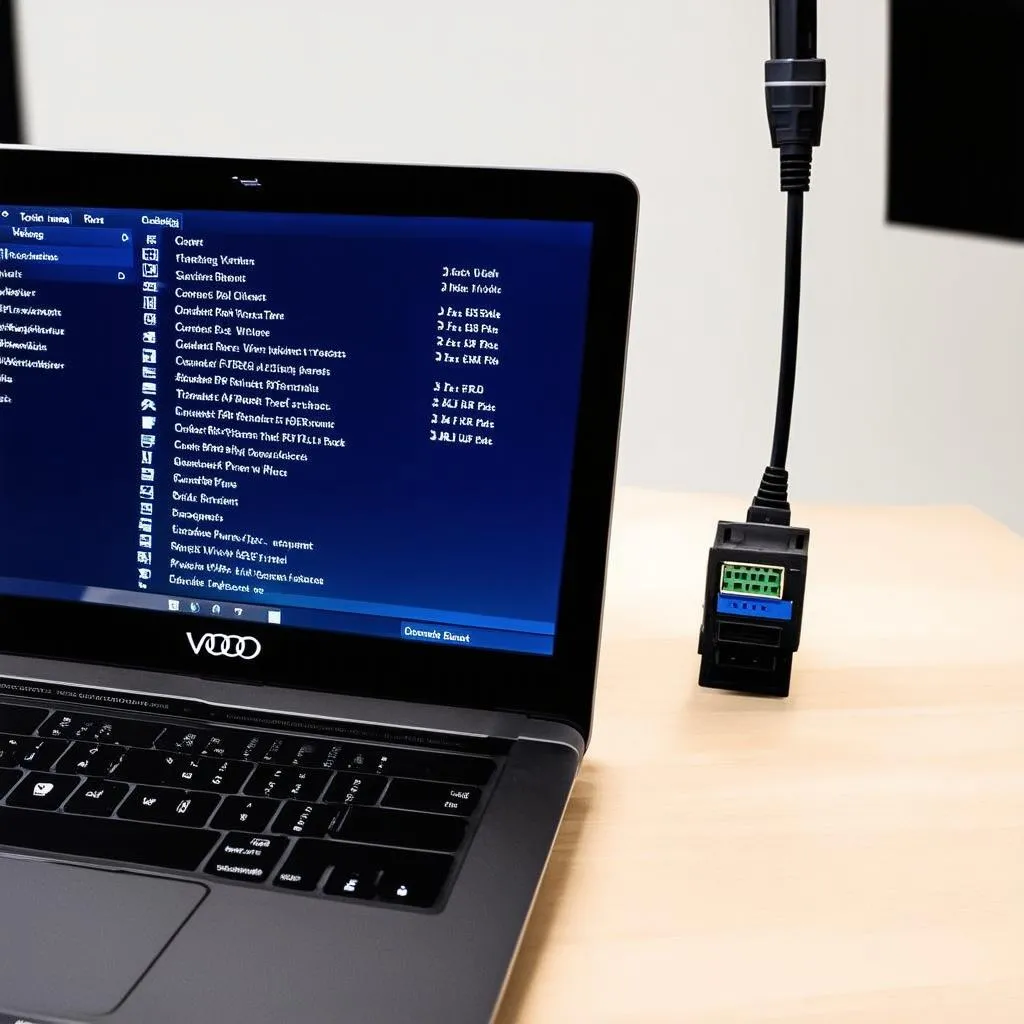The Haldex system is a critical component in many all-wheel drive (AWD) vehicles, responsible for seamlessly transferring power between the front and rear axles for optimal traction and handling. Like any intricate automotive system, the Haldex can sometimes encounter issues. This is where VCDS (Vag-Com Diagnostic System) comes into play, offering a powerful diagnostic tool for identifying and resolving Haldex-related problems.
What is Haldex VCDS?
VCDS, formerly known as VAG-COM, is a diagnostic software suite developed by Ross-Tech. It allows for deep communication with the onboard computers of vehicles from the Volkswagen Audi Group (VAG), which includes brands like Audi, Volkswagen, Seat, and Skoda.
When we talk about “Haldex VCDS,” we’re essentially referring to the application of VCDS software to diagnose and troubleshoot issues within the Haldex AWD system. This might involve:
- Reading and clearing fault codes: VCDS can access the Haldex control unit, retrieve stored error codes, and provide descriptions to pinpoint the root cause of a problem.
- Running actuator tests: VCDS enables technicians to command individual Haldex components, such as the pump or valve, to test their functionality.
- Monitoring live data: Observing real-time sensor readings (e.g., pressure, temperature) from the Haldex system can be invaluable for diagnosis.
- Performing adaptations and adjustments: In some cases, VCDS allows for adjustments to certain Haldex parameters, such as clutch engagement points.
The Benefits of Using VCDS for Haldex Diagnostics
Using VCDS for Haldex troubleshooting offers several advantages over generic OBD-II scanners:
- Depth and Specificity: VCDS goes beyond generic fault codes, providing detailed information specific to the Haldex system.
- Advanced Functionality: The ability to run actuator tests and perform adaptations sets VCDS apart from basic scanners.
- Cost-Effectiveness: While professional-grade, VCDS can be a cost-effective option for enthusiasts and independent mechanics compared to repeated dealership visits.
Common Haldex Issues Detectable with VCDS
A range of Haldex problems can be diagnosed using VCDS, including:
- Haldex Pump Failure: A faulty pump, often indicated by noise or complete AWD system malfunction, can be diagnosed through VCDS pump tests and live data analysis.
- Fluid Degradation: VCDS can help determine if a Haldex fluid change is due based on mileage or by analyzing fluid condition sensor readings (if equipped).
- Electrical Faults: Issues with wiring harnesses, connectors, or sensors can often be pinpointed through VCDS fault code analysis and live data monitoring.
- Control Unit Problems: While less common, a malfunctioning Haldex control unit can be identified using VCDS.
How to Use VCDS for Haldex Diagnostics
Important: Working with VCDS requires a certain level of technical proficiency. If you’re not comfortable with vehicle electronics, it’s best to consult a qualified mechanic.
- Connect: Connect your VCDS interface to your vehicle’s OBD-II port (usually located under the dashboard).
- Launch Software: Open the VCDS software on your computer and establish communication with your vehicle.
- Select Control Unit: Navigate to the “Control Units” section and select the module related to your Haldex system (usually labeled as “AWD” or similar).
- Diagnose: From here, you can access various functions, such as reading/clearing fault codes, running actuator tests, or viewing live data.
Remember: Always refer to the VCDS documentation and your vehicle’s service manual for specific instructions and safety precautions.
 Haldex Control Unit
Haldex Control Unit
Tips and Precautions
- Use a Genuine VCDS Interface: Counterfeit interfaces may not work reliably or could potentially damage your vehicle’s electronics.
- Update Your Software: Ensure you’re using the latest version of VCDS for optimal compatibility and functionality.
- Proceed with Caution: Only make adjustments within VCDS if you fully understand the implications. Incorrect settings can negatively impact your vehicle’s performance.
FAQs about Haldex VCDS
Can I use VCDS to change my Haldex fluid change interval?
The ability to modify the fluid change interval depends on your specific vehicle model. Some models allow adjustments through VCDS, while others may require a dealer-level tool.
What does a “Haldex Pump Relay” fault code mean?
This code suggests a problem with the relay that supplies power to the Haldex pump. It could be a faulty relay, wiring issue, or a problem with the pump itself. Further diagnosis using VCDS is recommended.
Is it worth investing in VCDS for personal use?
If you’re comfortable with vehicle diagnostics and own a VAG vehicle, VCDS can be a valuable investment for long-term maintenance and troubleshooting.
Expert Insight: “Using VCDS to monitor the Haldex system has been crucial in my workshop. Being able to observe live data like pressure readings has allowed me to diagnose subtle issues that would have been difficult to pinpoint otherwise.” – David Miller, Automotive Electronics Specialist
 Mechanic Using VCDS
Mechanic Using VCDS
Conclusion
Haldex VCDS provides a powerful means of understanding, diagnosing, and potentially resolving issues within your vehicle’s Haldex AWD system. While it requires a degree of technical knowledge, the insights and control offered by VCDS make it an invaluable tool for enthusiasts and professionals alike.
Need expert assistance with your Haldex system? Contact the team at CARDIAGTECH for specialized diagnostic services and support. We’re here to help keep your AWD system performing at its best.


